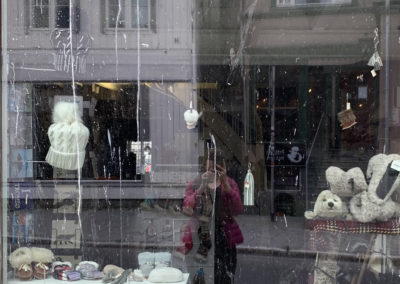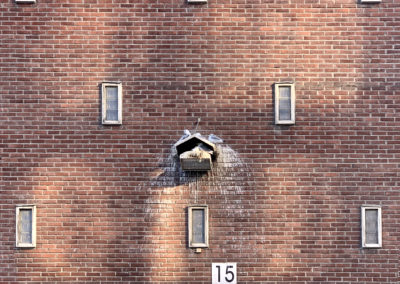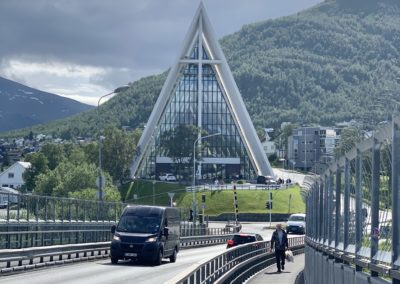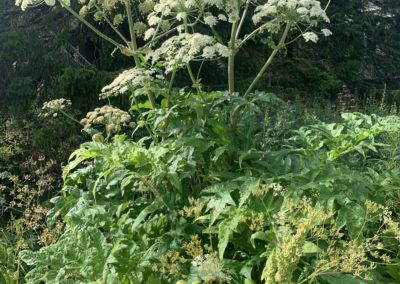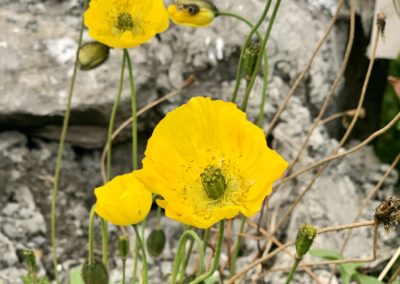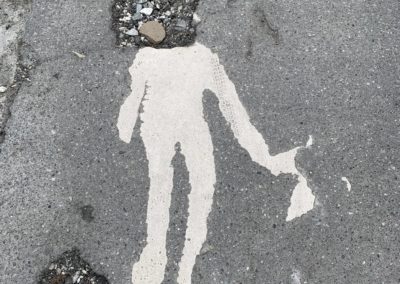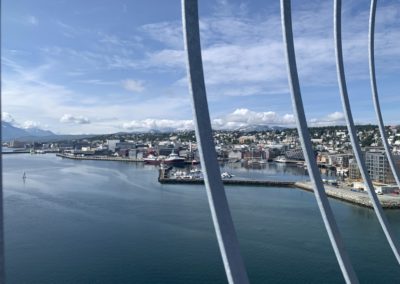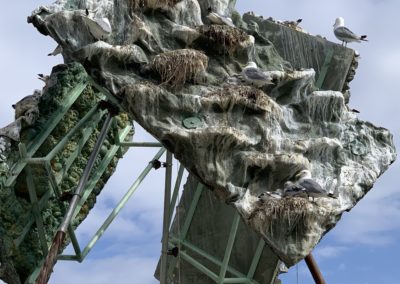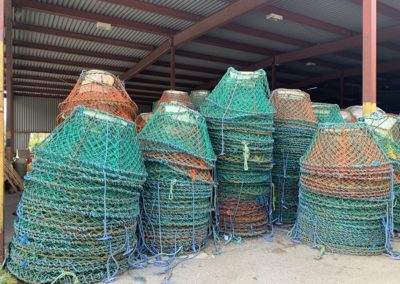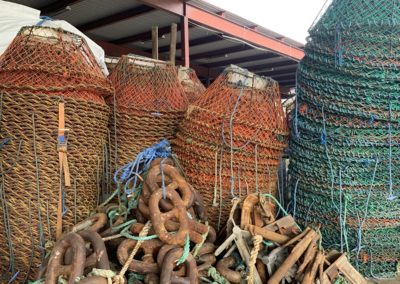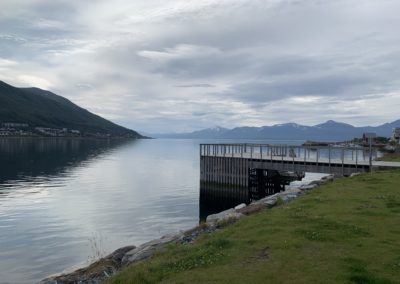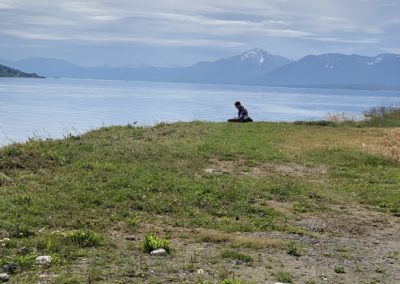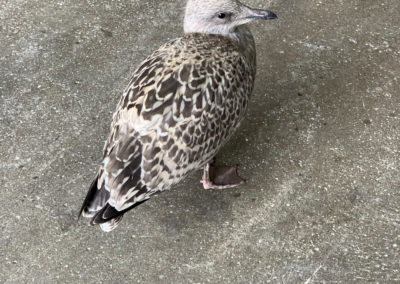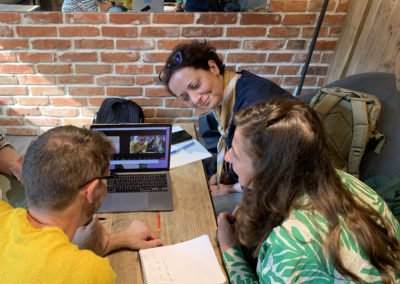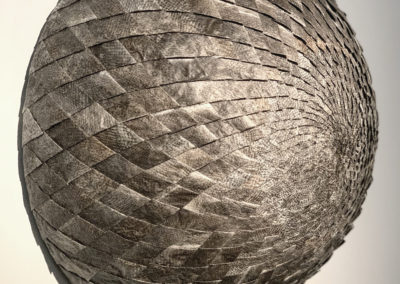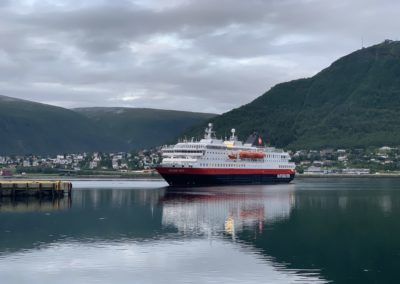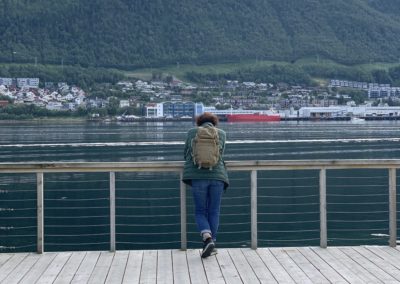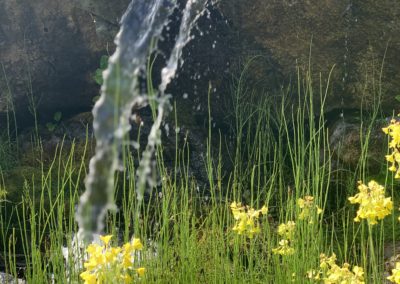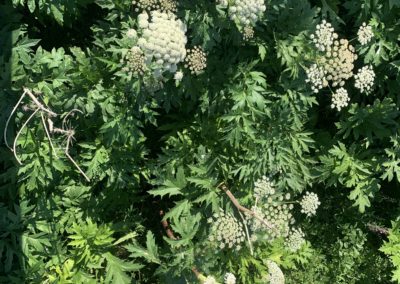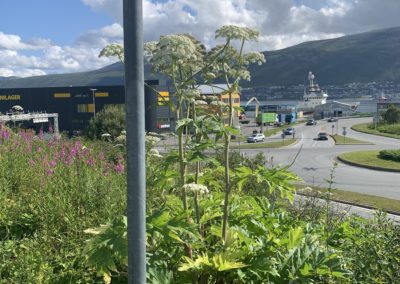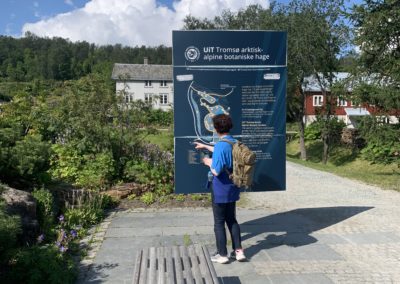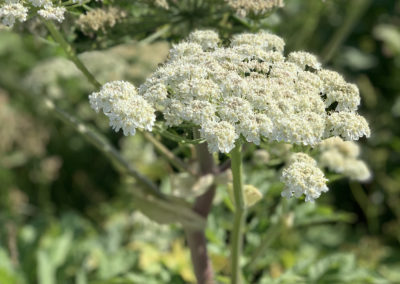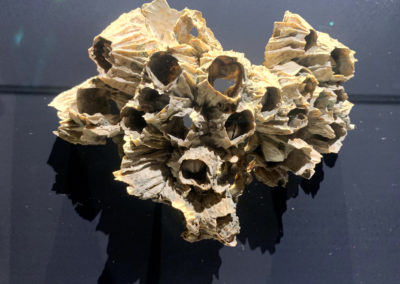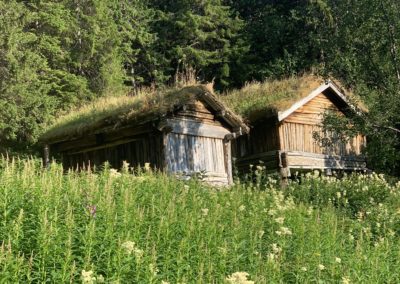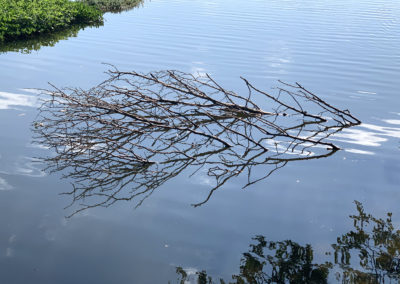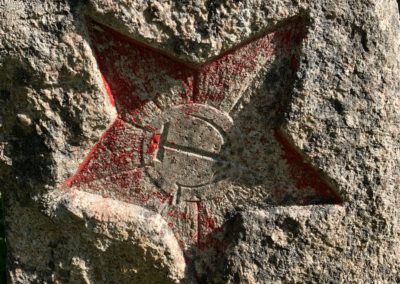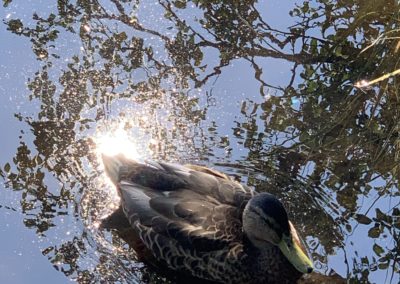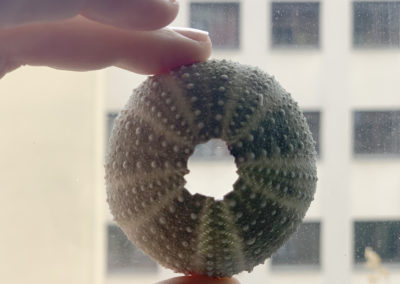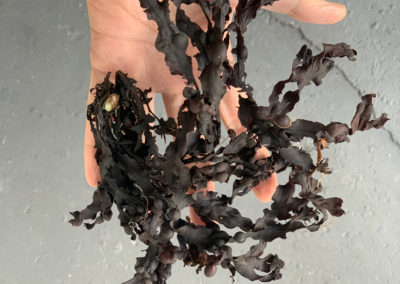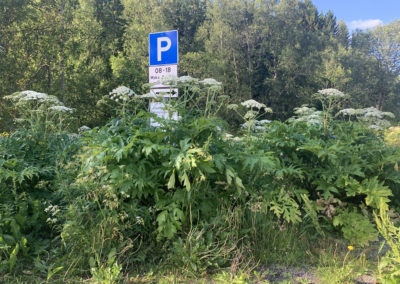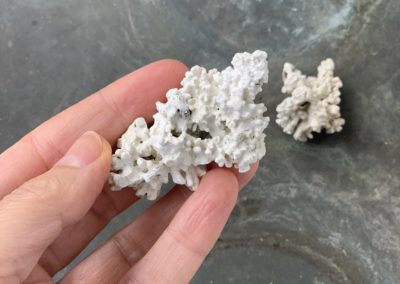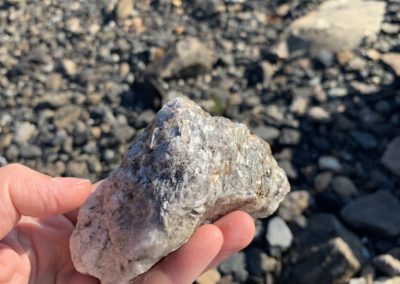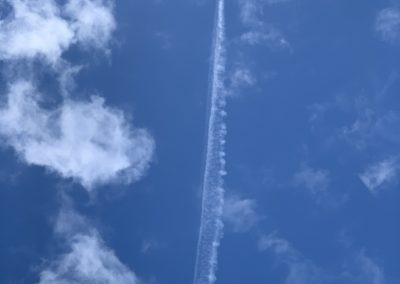Anetta Mona Chisa

Biography
Anetta Mona Chisa (1975) lives and works in Prague. Between 1994 and 2000 she studied at the Academy of Fine Arts in Bratislava. In 2006, together with Lucia Tkáčová she was awarded the Oskár Čepan Prize, and in 2011 she exhibited at the 54th Venice Biennale in the exhibition Performing History (with Lucia Tkacova and Ion Grigorescu). Anetta Mona Chisa’s artistic practice often takes place in the form of collaborative exhibitions and installations, and she is particularly concerned with discontinuities and transformation of the East European socio-political context. The artist reflects on changing systems of reference in a world that increasingly adheres to axiomatic constraints in technological development, the capitalist system and radical individualism. Anetta Mona Chisa’s solo and collaborative projects include exhibitions at Kunstraum Lakeside (2021), Kunsthalle Bratislava (2021), Museumcultuur Strombeek Gent (2019), Kunstraum Niederroesterreich, Vienna (2017), Waterside Contemporary, London (2013); Galerie Christine Koenig, Vienna (2011), Salonul de proiecte București (2011) or Neuer Berliner Kunstverein, Berlin (2008), in transit. sk, Bratislava (2006); Centre for Contemporary Art Futura, Prague (2006). Chisa has participated in group exhibitions at the National Museum of Contemporary Art in Bucharest; at the 10th Manifesta in St. Petersburg; in Kunstrau Kreuzberg / Bethanien, Berlin; CONTEXT Art Miami; tranzit. ro, Bucharest; Cultuurcentrum Strombeek, Grimbergen; Whitechapel Gallery, London; at the 3rd International Biennale of Young Art in Moscow; in the Museum of Art, Łódź; Thyssen-Bornemisza Art Contemporary, Vienna; MUMOK, Vienna and at the 29th Biennale of Graphic Arts in Ljubljana.
Photo credit: Aleksandra Vajd
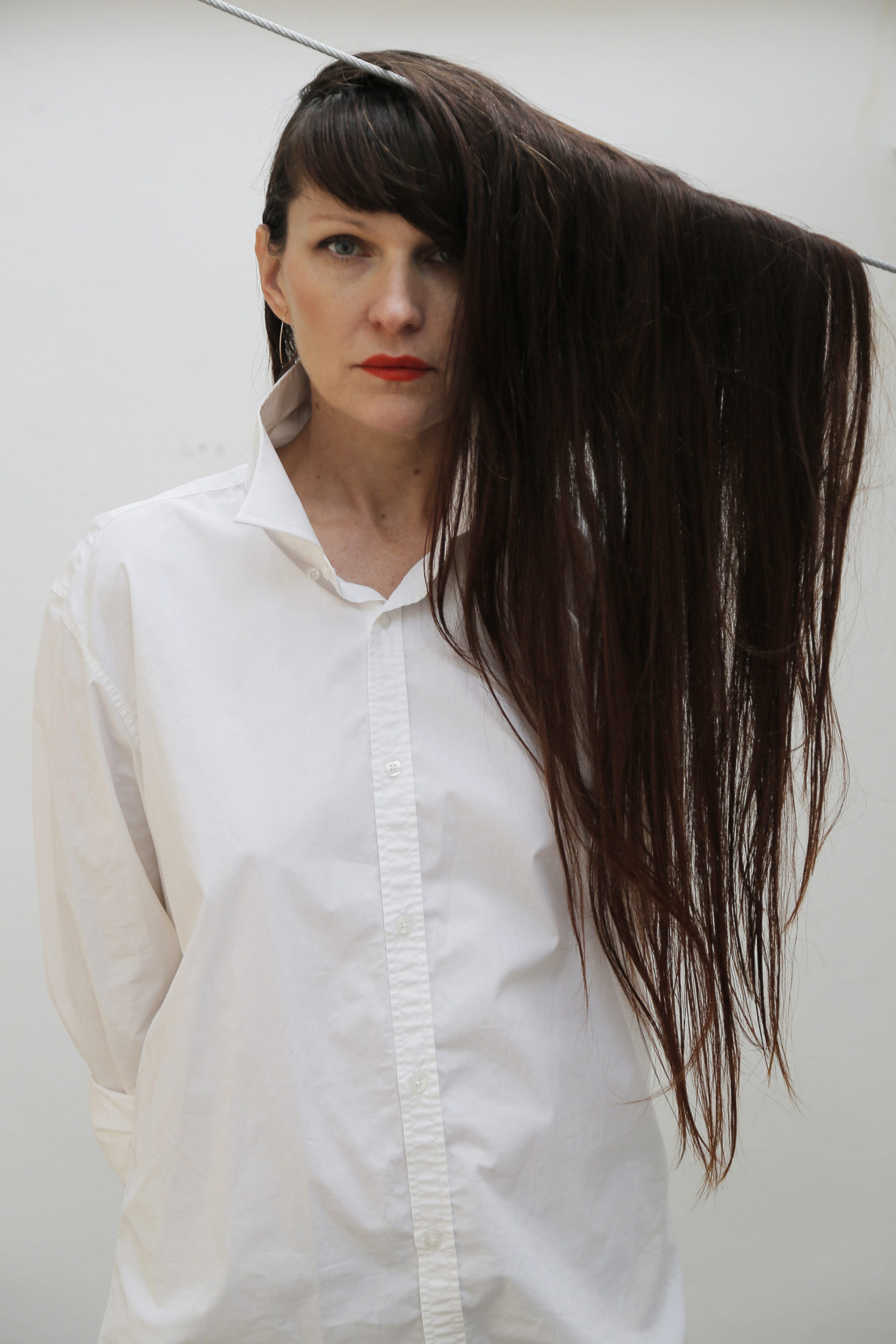
20 July
Arrival. Salty smell of rotten protein.
Seagulls in the sky, so free and high,
With a flash of white and a piercing cry.
Their droppings fall out of the blue,
Painting Tromsø with a splattered hue.
They glide, they rest, they eat and play,
Then let their guano fall where they may:
Troll museum. Shop windows. Benches. Terraces. Houses. Cars. Pretty much everywhere.
21 July
Long and intensive walk through the city: a strange mixture of architectural old and new, wood and bricks, hogweed and Iceland poppy – the two poisonous beauties.
Encountering Amundsen (big and flat), screeching seagulls. Sunny Tromsø bridge. Arctic Cathedral. Sherpa steps. Mosquitos. The so-called „Tromso palm“, which, I learn, is in fact Caucasian hogweed (known by the scientific names Heracleum persicum, Heracleum giganteum, Heracleum mantegazzianum or Heracleum panaces, can be all or one of these, they’re still discussing… ), native to Iran, Iraq and Turkey.
Midnight sun.
22 July
Sound walk. Perceiving the cityscape through sound. The sound of water. The silence of sea stars and sea urchins — predators and their prey. The ubiquitous sound of seagulls, the predators of it all. The noiseless omnipresence of hogweed in the landscape.
Visit of „I love Seagulls!“ at Tromsø Center for Contemporary Art.
The exhibition presented works dealing with birds, considering how we live in coexistence with other species, in particular with seagulls and the endangered kittiwake. I found the work of Irene Kaltenborn entitled “I hate seagulls!” (video, 14 min., 2022) quite informative. Inspired by the title of the exhibition, it simply showed in the form of slides a selection of national and international news headlines concerning seagulls, published between 2014–2022. The work highlighted the speciesism and dominionism that characterizes the handling of the cohabitation of people with seagulls. I suddenly saw differently the urban landscape of Tromsøya island. The work was yet another good reminder of how problematic scala naturae — the artificial dividing line that helps justify the belief that some species are more important — is.
23 July
Working and planning session with the whole group.
Visiting with Aurora the Norwegian visual arts museum in Northern Norway (Nordnorsk Kunstmuseum) where it seems the time to reflect on the colonialist, patriarchal heritage has come. I learn that 28% of the works in the museum collection are made by women artists, and 6.6% are made by Sámi artists. There is obviously still a long way from achieving gender or ethnic and racial equity in the art collections.
Midnight sun.
24 July
Majestic hogweed plants accompany my attention again during the walk all the way to Tromsø Arctic-Alpine Botanical Garden. In the botanical garden, among a variety of very nice plants, here it is again: Heracleum, a wild growing perennial plant from the carrot and celery family. The name likely references the robust and vigorous growth characteristics of these plants, drawing a parallel to the strength and power of Heracles. Heracleum is commonly known as hogweeds. Although it smells a bit like pigs, apparently this plant wasn’t named for its smell, but for its usefulness. In the past hogweed leaves were collected from fields and fed to pigs, as they are both nutritious and widely available.
Having been introduced in the 19th century as decorative plants, different species of hogweed (like giant and persian or caucasian) have spread ferally across Scandinavia and they are now very common in northern Norway, I learn. Despite the fact that the species has been declared an invasive pest, people seem to love it in Tromsø. They let it grow in their courtyards and gardens, along the streets, highways, near children playgrounds probably with a feeling of craving the exotic (hence the name “Tromsø Palm”). It has thrived in Tromsø, so much so that it has become an icon for this city. Some went so far as to suggest the scientific name Heracleum Tromsoensis, so it must be real love. I am still amazed by this fascination with the aggressively growing and spreading plant which not only poisons the soil where it grows, but it outcompetes most other local plants, the roots of it being so large and deep that they cannot be pulled out. Now it is nearly impossible to kill and it has become local folklore.
Visiting the Northern Norway Science Centre exhibitions and planetarium. The exhibitions are playful and the documentary “Extreme Auroras” is both impressive and cheesy.
25 July
Walk to the Arctic University Museum of Norway in Tromsø for a detailed visit of all the exhibitions it held. Geology, archaeology, anthropology, natural history, history, ethnography followed by the open-air museum and the Mini Skansen.
Walk along the coast, observing and collecting stones, shells, dried seaweeds… Observing a huge variety of different insects visiting hogweed flowers. Flies and bees seemed to be the most common visitors. Hogweed isn’t the most visually attractive of flowers, so I am curious what catches insects‘ attention. The size? The smell? The shape? The color? Apparently (the piggish) smell is key… the floral visitors think hogweed smells fantastic. Then the shape seems to be another attractor. Hogweed has an open, flat flower structure, which is super accessible for any pollinator. They don’t need long tongues to reach down into a thin flower tube, and they definitely don’t have to buzz to force a flower to release pollen and nectar. Open access.
26 July
On the way to Prestvannet Lake we walked through Tromsø Cemetery. The Commonwealth War Graves, revolutionary spirits, red star and hammer and sickle thumb stone.
More hogweed on the route to Prestvannet Lake.Along the streets, where people calmly tread,Hogweeds stand with leaves widespread. Beneath the sun, its phototoxic might,
Unleashes harm with skin’s thin light.
A monstrous plant, a menace in disguise,
Its sap harms both the foolish and the wise.
27 July
I can’t help with doing more research on hogweed, more precisely on the chemistry of its sap. What’s so toxic about it and how does phototoxicity work? Here’s what I found:
The sap contains something known as furanocoumarins. They become activated when exposed to sunlight. When the sap comes into contact with the skin and is exposed to UV light, the furanocoumarins can penetrate the skin leading to a condition known as phytophotodermatitis (skin irritation, huge blisters and rashes).
On the other hand, in its native habitat (South Asia and Middle East) hogweed (giant and persian) is appreciated for its aromatic seeds, which are often used as a spice. The seeds have a unique flavor and are used to season a variety of dishes. Actually, it seems the plant’s seeds and leaves have both culinary and medicinal uses in the region. I wonder if it will ever become a food source in this region.
Research on the coral-looking formations I found on the sea shore. I was curious what that could be. Corals? I learn they are carbonate sediments derived from maerl-producing coralline algal biotopes called rhodoliths, not corals. So actually they are calcified seaweed probably from the Phymatolithon or Lithothamnia species.
Also looking into some shiny rocks I gathered because they looked beautiful in the sun. More beautiful than the photos can capture. I found out they are metamorphic rocks called schists, and they shine because they contain high concentrations of metallic minerals, such as mica or hematite which reflect light.
Midnight sun started to set. The polar days are getting shorter.
The project “Blue Sun – Conversations on art, science, and ecology” benefits from a 93960 Euro grant from Iceland, Liechtenstein and Norway through the EEA and Norway Grants.
The EEA and Norway Grants represent the contribution of Iceland, Liechtenstein and Norway towards a green, competitive and inclusive Europe. There are two overall objectives: reduction of economic and social disparities in Europe, and to
strengthen bilateral relations between the donor countries and 15 EU countries in Central and Southern Europe and the Baltics. The three donor countries cooperate closely with the EU through the Agreement on the European Economic Area (EEA). The donors have provided €3.3 billion through consecutive grant schemes between 1994 and 2014. For the period 2014-2021, the EEA and Norway Grants amount to €2.8 billion. More details are available on: www.eeagrants.org and www.eeagrants.ro


